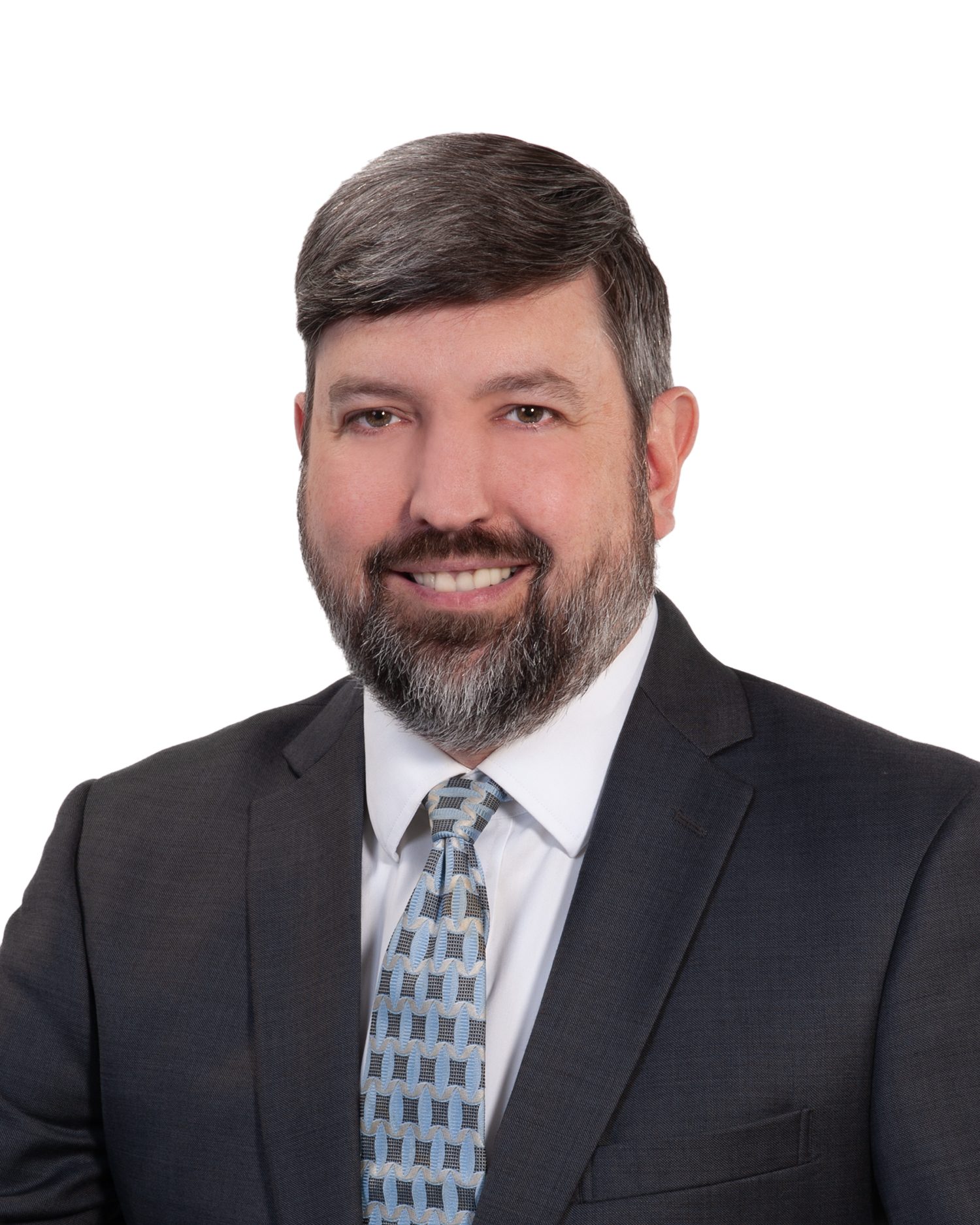CAT Compliance – Build the Surveillance Framework Regulators Demand
By Ralph Magee and Stephen Kuhs
Subscribe to our original industry insights
Key Elements of a Strong CAT and CAIS Compliance Program
Consolidated Audit Trail (CAT) compliance requirements include more than just data submission; you need comprehensive surveillance programs that includes both monitoring exceptions and successful reports to maintain regulatory compliance.
In this episode of the Oyster Stew podcast, Oyster experts Ralph Magee and Steve Kuhs break down the essential elements of a strong CAT and Customer Account Information System (CAIS) compliance program. From documentation and controls to navigating the roles of clearing firms and CAT Reporting Agents, Ralph and Steve share actionable insights to help firms stay compliant in an increasingly complex regulatory landscape. Whether you’re building your program from the ground up or looking to enhance existing practices, this discussion covers what you need to know—including the importance of communication across departments and the value of third-party expertise.
Listen as Ralph and Steve discuss the following:
- Documentation. Effective CAT compliance starts with solid documentation including written supervisory policies that designate ownership, detailed desk procedures explaining execution, and compliance checklists ensuring accountability.
- Controls. Regulators now expect firms to have controls beyond basic reporting – simply submitting data is not enough. Regular source file analysis comparing original data to submitted reports is crucial.
- Clearing Firms and CAT Reporting Agents. Introducing broker-dealers remain responsible for CAT compliance, even when using clearing firms as CAT reporting agents (CRAs). CAT reporting agents typically provide basic reporting but not surveillance tools or exception management
- Communication. CAT responsibilities often span multiple departments (trading, compliance, operations, new accounts) requiring strong communication
- Expertise. Expertise for CAT compliance remains scarce in the industry. Third-party reviews provide valuable unbiased perspective and specialized expertise
With more changes on the horizon, success depends on staying informed, investing in flexible systems, and building a scalable compliance framework. Oyster Consulting’s trading and regulatory compliance experts deliver customized guidance and strategic insight to ensure your compliance program is both effective and sustainable. If you are ready to strengthen your CAT compliance framework with expert guidance and purpose-built tools, reach out to us today learn how our industry veterans can help develop surveillance programs that protect your firm before regulators arrive.
Streamline Compliance with Oyster Solutions CAT Reporting Software
Oyster Solutions, our proprietary governance, risk, and compliance software, offers powerful tools to simplify CAT reporting and enhance oversight. The platform integrates with your systems to automate validations, flag reporting exceptions, and generate actionable reports. With built-in workflows, audit trails, and testing capabilities, Oyster Solutions helps firms streamline their reporting obligations and reduce regulatory risk. As CAT and CAIS data reporting obligations continue to evolve, our technology and expert support ensure your firm stays one step ahead.
Transcript
Transcript provided by Buzzsprout
Libby Hall: Welcome to today’s episode of the Oyster Stew Podcast. I’m Libby Hall, Director of Communications for Oyster Consulting. In today’s episode, we’re joined by Oyster Consulting experts Ralph Magee and Steve Kuhs, who bring their deep knowledge of CAT and CAIS reporting to the conversation.
CAT compliance isn’t just about submitting data—it’s about building a robust surveillance program that monitors both errors and successful submissions. Ralph and Steve will walk you through what it takes to build an effective CAT compliance program, including the importance of clear documentation, comprehensive controls, and cross-departmental communication. They’ll also address common gaps in oversight when relying on CAT reporting agents, and why third-party reviews can provide critical expertise.
Let’s dive in – Ralph?
Ralph Magee: Steve, thanks again for joining me today. We’re going to talk a little bit about the anatomy of having a strong CAT reporting surveillance system. I think for today’s discussion, I want to make clear to our audience that when we talk CAT, we’re including things that you should also consider for CAIS as well. These all roll up under the CAT rules. Though a lot of times you hear the industry separate CAT reporting versus CAIS reporting. they’ll all roll up under the same rule here for discussion today. And one of the things, Steve, that I see out there and deal with our clients all the time is really the basics. It’s having strong policies and procedures, and I think it’s important for the audience to understand today. Our approach here at Oyster is we have policy documents, written supervisory policies or procedures that are out there that are supported by strong desk procedures and then followed up with some compliance checklists. That’s basically how we like to structure these reviews out there with our clients. Is that similar to your experience in the past?
Steve Kuhs: Absolutely. The first thing that any regulator does when they come in to give you an examination is ask for your procedures. It’s so easy to get yourself tripped up when they’re looking at those supervisory procedures to not even mention the rule. It’s a new rule. A lot of times, you’ve got to remind yourself to go back into those procedures to add these steps. And so, it’s very important that you are paying attention to incorporating these into your supervisory procedures and then having those good desk procedures and executing on what you say you do. It’s just the most important thing at the start of an examination. You can have the best data in the world and you could be doing perfect work, but if you don’t have that documented so that they know that it’s repeatable, then they’re not going to give you credit for it.
Ralph Magee: So those tasks are sort of outlined at a very high level in that WSP documentation, and then your desk procedures is where you’ll find details about what you are specifically doing to accomplish all of those tasks that are written there. And then you can further add those compliance checklists there for accountability. That your ops group or your compliance group, wherever this may live within your organization, this holds those people accountable for what they should be doing and making sure all those tasks get done.
Steve Kuhs: Yeah. In the supervisory procedures, you’re really looking for who owns this rule and who’s surveilling the rule? That’s what you want to be able to spell out. You want to demonstrate that the firm knows the rule exists, has a designated owner within the firm, and a designated supervisory structure supporting it. And then when you get to the desk level, that’s where you really drill down into how you accomplish those tasks. But it is very important.
Ralph Magee: I think what we have observed with our clients is it’s extremely important to have good controls in place because this is an ever-changing environment. Multi-Year implementation, we’ve talked about that. There’s some constant updates that need to go on. Some of those need to flow through to these documents that we’re talking about. There’s new exemptions that are out there ever changing in that regulatory environment. And then you have things that you find out along the way on certain documents such as looking at what the FINRA priorities are on their exams, the recent findings that you were seeing that are published out there, some fines that may have been imposed on some industry members. So, there’s learning that goes on constantly. And those controls point you back to make those updates.
Steve Kuhs: Yeah, that’s exactly right. And it’s important to remember, this is a new rule and the industry as a whole and the regulators were working on just getting the data in. So, your CRAs and your BDs, your OMSs, they wanted to get the data to FINRA in good form and get it in there, just do the CAT reporting, but the rule’s now final and the rule’s out. And so, that’s an accepted assumption that should be done. And so, we’ve now moved to the point where you are doing the reporting, but where are your controls? What are you doing with that data? What kind of supervision are you doing to do it? It’s not just good enough to say, well, I’m reporting, so I’m done. You’ve got to be monitoring those exceptions. You’ve got to be chasing those down, and you have to be doing a systematic review of your correct reports to make sure that the data you’re sending in makes logical sense to your firm.
Ralph Magee: Very, very important point. And we want to do this on a pre-FINRA examination basis, rather than a post examination where they have cited you for some finding or some shortcoming that may exist in your current procedures and, obviously, your compliance system as a whole. So, it is very important for firms to concentrate on their policies and procedures there. I think another important aspect of it is, how do you report to CAT and to CAIS? Your reporting structure is essential. Most of the industry uses some form of CAT reporting agent to report their data to CAT. I think it’s important for us to talk a little bit about the risk that’s associated with that. What are your feelings on that, Steve?
Steve Kuhs: Well, not only do you see firms having one CRA, but you also see them having multiple CRAs and having them work together. So, the risks there are the handoff of the data, and to make sure that you’re actually capturing all the events in the lifecycle of the trade while it’s under your firm’s control. And that’s where you really have to interrogate your CRAs and have a way to consolidate that information. If you are using a back-office provider, maybe you’re using an OMS and what we’ve seen is introducing broker dealers are leaning on their clearing firms to be their experts, their subject matter experts and handle their information. And the regulators don’t see it like that. The responsibility really lies with that introducing broker dealer to be monitoring this information and that clearing firm as your CRA is going to meet their level of requirement in their agreement. And if you look at that agreement, it says, I’m going to give you reports in a timely fashion and I’m going to beat the deadlines. It doesn’t say anything about helping you with exceptions, error creation or surveillance. So, that really is something that falls back on the introducing broker dealer – the firm itself.
Ralph Magee: Yeah. And it’s something that third party, that’s acting as your CRA, how trustworthy are they in doing their own due diligence on themselves? So, there’s a conflict of interest there in some degree, or maybe firms should take it under their own wing. To think about doing that due diligence or regular due diligence on that reporting or have a third party look into doing that due diligence for them.
Steve Kuhs: Yeah. Listen, we have real life experience in these areas where doing a review of your CAT activity over a timeframe, say it’s a week, doing a surveillance of all of your entries and looking at it for soundness, has caught deficiencies in some areas that our clients are using. And its simple things that are easy to detect when you look at it on a scale, but not easy to detect when you look at a day-to-day event, or you’re just managing exceptions. Something like, account types. I looked at my events for a week and I don’t have any inventory accounts ever being reported. Well, that’s never going to be an error, but you know that you have inventory accounts, and you should have reported some. And that’s something that you could catch when you do a surveillance run of your own on your data.
Ralph Magee: Yep. Great point. And you also have a complication when you throw in different trading systems, OMSs and back-office systems that are required to report the account and customer information to CAIS. So, there are times where you have these multi-system dependencies that need to be reviewed and analyzed, especially for consistency. Does one aspect of this system, is it dependent on information from another system? What kinds of things have you seen out there in terms of those types of conflicts?
Steve Kuhs: Firms that are using OMS to report some of their activity as well as their back office system, we have seen get out of sync with each other especially in the FDID space, and you’re going to find yourself potentially reporting a trade in one from one system that can’t find its way back to a good FDID and that’s going to start throwing you errors and warnings that you’ve then got to address. Ralph, I think you’ve had some specific experience with that.
Ralph Magee: We have. We definitely have. And that reconciliation process can definitely get broken, and you’ll have some orphaned fds, if you will, that are out there that you can’t tie back to the source or to a particular order flow within a firm. So, it can happen and definitely something that may not immediately error right in FINRA’s validation of the reporting. But through a separate analysis that can be done on those FDAs, you can find that pretty quickly. You know, I think the other thing is just you touched on subject matter expertise or experience. To me, CAT and CAIS live in multiple departments across our clients. We have some clients where Trading owns this and others where compliance owns this, others where it’s in operations or maybe a combination of all three of those and includes some IT folks that are involved in this. Depending on the structure of how they report, if they’re self-reporting or they use a CAT reporting agent, that really is a challenge, I think, for most of our clients. Because I would say that by far with the ones that I work with, it lives in multiple places. It’s not owned by a singular department of a firm of one of our clients. So, communication becomes really important.
Steve Kuhs: Absolutely. And with CAIS, you left out the fact that some of this is now in a new accounts group. And that’s a team that has never had a reporting requirement in their history of the industry. Now, all of a sudden, you’re reporting a CAIS, like trade reporting, which is second nature to somebody who’s in a trade reporting role. They’ve been reporting to Trace or MSRB or OATs their entire lives. So, reporting a trade makes sense to them. Reporting a new account to somebody is a brand-new feature for those departments. And then having to manage an exception report and the possible errors and fixes that come along with that is a very new thing.
Ralph Magee: Yeah. And we’re talking about expertise or subject matter expertise that’s scarce still right in the younger stage of this regulation. There still aren’t a lot of people out there that have experience in understanding the importance of each one of those departments and where each one can add benefit to the overall surveillance of the reporting itself for both CAT and CAIS. I think we’ve seen the use of working groups. I know that I have. Is that something that you used with your previous employer? Or are you a fan of those? Or, do you like a another approach?
Steve Kuhs: No, I’m a huge fan of finding peer firms like yourself at getting together and being collaborative. I don’t think that we could have successfully launched this at my previous firm if we didn’t have the cooperation of similar size regional broker dealers. You’re facing the same problems. This isn’t a market advantage where you need to try to beat your competitor. You’re just trying to be compliant with a rule and so helping each other out makes it easier. Plus, you’re able to then use that power leverage to make change to the rule where you see it’s needed. So CFA and FIS were great advocacy groups through the creation of the rule.
Ralph Magee: Well, I think using those peer groups together and learning from the overall experience of that group and making changes and being quick and nimble, is one of the things that I think has made us successful and made our clients successful utilizing software. The efficiencies that brings so that you can ensure timely, accurate, and complete reporting to both CAT and CAIS. We touched on this, but I don’t see a lot of the large-scale CAT reporting agents, like a clearing firm, offering a lot of dashboards or compliance and surveillance tools that would adequately surveil CAT and CAIS, as we’ve been instructed per the guidance that we have out there.
Steve Kuhs: I haven’t seen it, so I didn’t see it in my time in the industry. What I experienced was, here’s a list of your events, good luck. I felt that as a self-clearing firm, and I felt that as an introducing broker dealer. And then since my time as a consultant, I’ve seen more clients and more clearing firms, and I have not seen anybody providing a tool that does a good job of giving the firms the ability to surveil their events. They basically just give them a readout of what happens. And a lot of times, it’s in a format that isn’t easy to manipulate. It’s in a machine-readable report format, so it’s coming at you in text and you’ve got to get your IT department to create some sort of way to adjust that in a manipulable form.
Ralph Magee: So that brings in firms like us, third parties, that can come in and really give you a lot of benefit for the cost. So, there’s some value that can be used there from the firm to get that fresh set of eyes looking at some of the data both on the CAT and on the CAIS reporting that the firm is creating or having another firm create on their behalf. Communication again, is key. I feel like getting that communication structure no matter how you report, no matter how many departments are involved in the CAT and CAIS surveillance and compliance, it’s just essential to make sure that that structure is set up correctly. And then finding firms also that can provide training, not only training internally as to what tasks should be performed on a daily basis, monthly basis, periodic basis – ongoing surveillance of both CAT and CAIS. But training is sometimes needed because just knowing how to use the tools that are out there, not only from your clearing firm, but also from the industry itself.
Steve Kuhs: If I could circle back to your point about subject matter expertise within firms, you just have to remember, this is a new rule. And so, this rule hasn’t been in existence for 30 years, and you haven’t had multiple industry veterans who have touched this rule. You can’t look at your firm and say, we’ve got four people who have at one point in their career had an exposure to this rule and passed down that information to the next group, who then passed down it to the next, this is a situation where somebody could leave your firm and you’re going to lose all the knowledge you have about CAT for that firm, and you’re going to have to replace that individual. And that’s where a firm like ourselves, consultants who have done this across multiple venues, across multiple reporters are able to quickly and efficiently help train up staff so they can get that benefit of the industry veteran who’s seen this role and all that comes with it.
Ralph Magee: I think one of the things that makes us unique across all of our competition is that most of us come from places like you, Steve. They come from sitting in that role at a broker dealer performing these tasks that we’re talking about. They have that firsthand experience. We’re not a firm of career consultants that graduated college and went right into the consulting business. So we’ve all sat there in those seats. We’ve done these tasks; we know what management needs from the folks that are performing these tasks in order to successfully supervise that. I think where we’ve seen recent success, and I think where we’ll see even more success going forward with our clients is really talking about how we continuously surveil both CAT and CAIS. I’ve seen huge benefits where we’ve been able to go in on a semi-annual basis, and do a sampling of a firm’s CAIS and CAT reporting. Having that third party perspective to come in with good consulting experience that we’ve acquired over the last couple of years in combination with having a software efficiency platform that we can utilize, that our consultants can utilize to put a fresh set of eyes on the reporting and produce some unbiased results that firms can take away. Any thoughts there?
Steve Kuhs: I agree with everything you said, and the other thing I’d say is we could do it at scale. So, a human being can only look at so many reports, and what you really need to do is to look at your successful reports and not just your exceptions in a trade reporting scenario nowadays. And when you’re looking at your successful reports, there’s just so many, there’s so many MENOs, there’s so many MEORs. The volume of legs that go on for a trade in its lifecycle is huge. And to be able to, to adjust all that information and then spit out reports and review and surveillance that is useful and targeted towards the priorities of the regulators is invaluable. And that’s something that we can do, and we’ve had success doing.
Ralph Magee: The reporting may be perfect. And oh, yeah, it may be flawed.
Steve Kuhs: But then you have that artifact that said, I did a SI surveilled my reports, I’ve checked that box. And you can put that aside and know that when they come in, this is going to be one of the things that they might not even decide to examine you on.
Ralph Magee: And if you haven’t done it, you don’t have that story to tell. You don’t have that artifact. You’ll have, hey, did I do enough to be reasonable? Is a word that’s thrown out there in the industry access to software compliance reports and expertise that you might not have internally or may not have access to otherwise through your providers, through your CAT reporting agents. That’s where firms like us can come in and use the expertise, use the software, use these reports that we know have been successful with management within our firms as well is extremely important. You know, you need to be ready to demonstrate what you are doing here, because you’re going to be asked, here’s your policies, your procedures. I think one of the big things that our clients have given us positive feedback on is source files. Really comparing the source file that’s generated by whatever the provider it is and comparing that to the output that goes out the door to CAT and to CAIS becomes very valuable.
Steve Kuhs: Yeah. That is the final hurdle. If when you get to that state to really have confidence that your successful reports are correct. A successful report is just one that doesn’t trip a known FINRA error. But, if you are making a report and saying something is an inventory account when it’s actually an error account and you compare that to a source file check, I now know what my error accounts are, and I could see if that report was reported correctly. That’s just one data point we could look at, but there, it happens over and over across the whole litany of reports you make in Amino and amor, and that source felt is how you have that confidence that what you submitted, was not a FINRA error and is also not a firm error.
Ralph Magee: Yeah. And if you go back to early guidance, even notice to members 20-31, you see where the expectation is that firms are completing that type of source file analysis that’s out there. That’s been something that they’ve been very adamant about from the very beginning and from some of the very early alerts that they put out to give the industry some guidance and reporting that back to upper management. So, they understand exactly what’s going on within the firm is key as well. I think that we’ve had a bunch of great discussions here about the things that I think firms need to be doing. Things that we’re guiding our clients to do on a regular basis. We talked a little bit about what is reasonable.
We are finding that in general guidance, we’re trying to say that, if firms are out there and they’re looking at a week’s worth of trading regardless of their volume, if they’re doing that type of deep dive and analysis on a week’s worth of trading every six months, that would be something for most firms that would be considered reasonable. Now, you know, that can vary. I’m sure you would agree, Steve, if a firm’s only reporting 50 events to CAT and maybe four customers a day, it’s a different environment. There may be some other surveillance programs that you could put into play, but if you’re doing normal regional kind of broker dealer volume that may be a hundred thousand events a day to CAT, it seems reasonable if you’re at least deep diving into that one week’s worth of data every six months on an ongoing basis. Any thoughts there on reasonability?
Steve Kuhs: Absolutely. I think that fits you looking at that in a timeframe of semi-annually. And one thing that you’ve got to think when we’re creating a surveillance structure that upper management can feel confident in. A lot of times the people who are doing the day-to-day tasks or the review are not licensed individuals per se. And so, the person who’s ultimately responsible for it is that chief compliance officer. The 24 who sit over the trading groups need to have some way of having the confidence that the work that’s being done under them is reasonable and correct. And these kinds of surveillance techniques are the things that can give them that confidence, because at the end of the day, they probably are the ones that own it, even though they aren’t the ones that are touching it.
Ralph Magee: Exactly. Well, I think we’ve talked on a lot of great points today. I appreciate you joining me for this discussion. And you know, encourage our listeners out there to reach out to us and let us help you more and develop that really strong CAT and CAIS surveillance program that your firm probably needs.
Steve Kuhs: Thank you, Ralph.
Libby Hall: If you found today’s discussion helpful, don’t forget to subscribe to more episodes where we dive into industry strategies and best practices. For more information about our experts and our services, visit our website at oysterllc.com. Thanks for listening.




